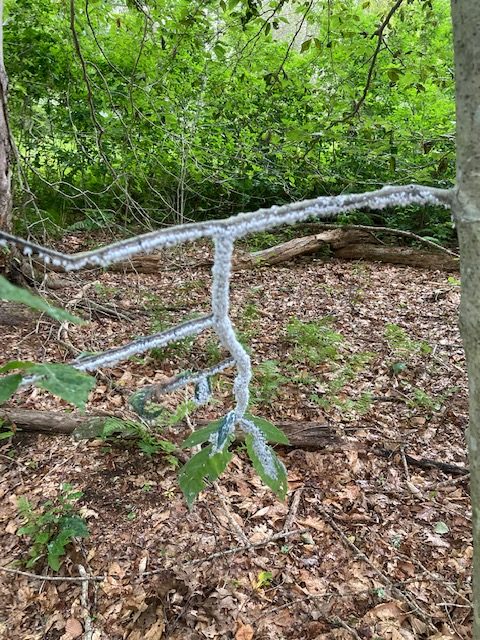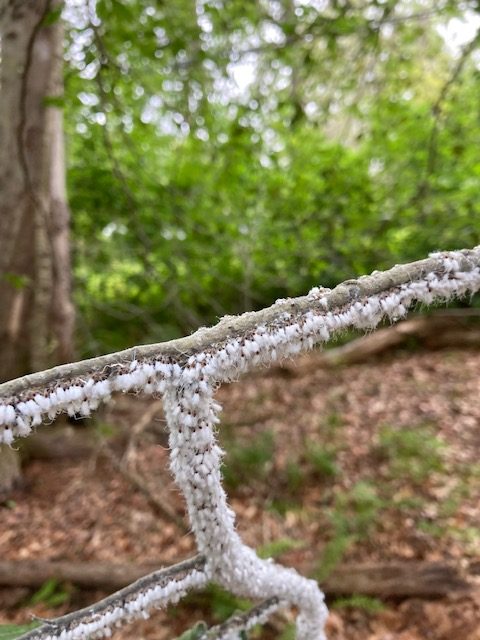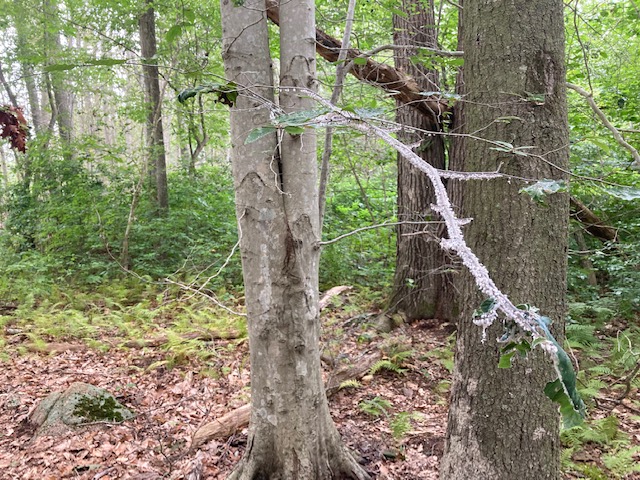Note from Nate McCullin, Land Stewardship and Outreach Manager



The American Beech (Fagus grandiflora) has long since been a staple of the hardwood forests of New England. Growing up to 100’ feet tall it is hard to miss with its silvery gray bark rippling up and down its large trunk which is typically covered with branches quite close to the ground. As a colonizer this tree is more often than not found in stands with trees of various ages. Those of a certain size look like elephant legs firmly planted into the forest floor. Its deep green foliage provides dense shade in the summer and its adaptability to different soils and moisture regimes made the American Beech a perfect tree to cultivate in gardens. Its small triangular nuts covered in a spiny husk add appeal aesthetically and also provide plenty of winter reserves for squirrels and chipmunks. With the unique characteristic of not dropping its leaves until spring the beech also can highlight the golden sun and emit a perceived warmth even on the coldest winter days.
Much like the Chestnut, Ash and Hemlock the Beech too is under attack from many different insects and diseases and is slowly disappearing from our forests. You may have noticed a decline in their health in recent years which is primarily due to Beech Bark Disease, a combination of wounds inflicted by a scale insect which pierces and sucks out fluid from the trunks and branches of trees. This wound creates the perfect conditions for a fungus to take hold causing cankers that ultimately kill the tree. These cankers appear as blackish ovals on the bark and are often called “shotgun fungus” as it appears as if the tree has been pelted with bird shot.
Many trees do not survive, but some are isolated enough or have strong enough systems to keep this disease at bay until other pressures begin to strain the tree. This year of drought has proven to be an extra stressor for this historic species as the trees strain even more to stay healthy. Trees are often not killed by a single entity, but when two or three factors culminate at once they are at significant risk. With the defense system of the American Beech at risk from Beech Bark Disease and drought a new pest has entered the fray to take advantage.
You may have seen the branches of your Beech covered in “snow” this summer and unfortunately it’s not an early Christmas. Enter the Beech Blight Aphid, a white colored piercing-sucking insect that “dances” on small branches whilst extracting fluid from the plant. This insect is often seen by the thousands and is easy to spot as masses of white sway back and forth while excreting honeydew, a byproduct of their feeding. This honeydew is high in sugar and creates the perfect conditions for a fungus that is black in color to run rampant. This sooty mold can be seen at the base of trees on its bark and in the leaf litter surrounding the tree. This in and of itself will not kill the tree but the combination of fungal disease, drought and insect pressure can be the perfect trifecta for death.
For those Beech trees that populate our forest the outlook is grim. New strategies will be needed to fight these pressures, but ultimately this is a time to reflect on this iconic tree and be grateful for its current beauty in the landscape. Looking forward, this may create an opportunity for the next dominant hardwood to take hold and possibly even a migration from our more Southern Natives.

